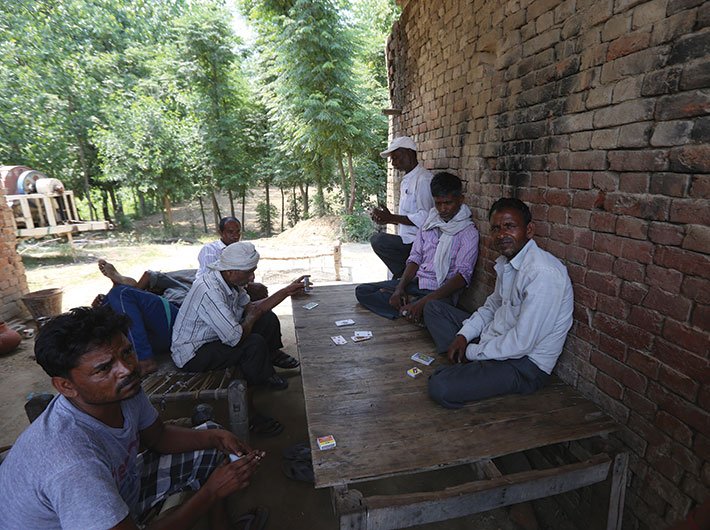The Narendra Modi government has set aside Rs 52,393 crore in 2017-18 for the welfare of the dalits. On the face of it, the amount is substantial. However, an analysis of the past actual allocation shows that there has in fact been a dip in spending on schemes that are specifically meant only for dalits.
Indeed, as finance minister Arun Jaitley pointed out in his
budget address, the amount has been raised from the Rs 38,833 crore allocation in 1016-17, a 35 percent increase.
But the National Coalition on SC TSP Legislation and the National Campaign on Dalit Human Rights in its pre-budget memorandum 2016 -17 said that on an average about 8.5 percent has been allocated for the SC community as opposed to the 16.2 percent which the Narendra Jadhav task force (set up by the planning commission in 2010) recommended.
“Meaning therefore, that there has never been population proportionate allocation in the last 5 years. As one can see that the actual allocation that directly benefited the community is only an average of about 1.6% for SC and 1.3% for ST,” it
said.
In 2014-15, the due allocation was Rs 95,450 crore, while the Scheduled Caste Sub Plan (SCSP) allocation Rs 43,208 crore. The targeted allocation was Rs 10,689 crore. In 2015- 16, the due allocation was Rs 77,236 crore, while the SCSP allocation Rs 30,850 crore. The targeted allocation was Rs 8,792.70 crore, said the memorandum. This shows that the there has been a drop in targeted allocation of about Rs 1,800 crore.
The memorandum pointed out that a large amount of funds under SCSP-TSP is allocated towards general programmes and schemes, which are not specially designed for SCs and STs. “Many ministries and departments make huge amounts of ‘notional’ allocations in the Union Budget, which are mere paper figures and do not flow through special schemes directly benefitting SCs or STs. These include salary, administrative, construction and miscellaneous expenses.” The Plan allocation made by various line departments meant for SCs and STs does not have enough scope for tailor-made projects and schemes suited to their specific needs, it added.
In short, it's a case of window-dressing accounts to make the allocation seem much more than the actual amount directly benefiting SCs. This is not a new problem. Concerns have been raised in the past about the effective implementation of the SCSP and TSP.
“The Jadhav committee pointed out inadequacies in the implementation of SCSP and TSP. It observed that most of the central ministries did not indicate its SCSP and TSP outlays under separate budget heads. Some ministries showed a notional earmarking, but the criterion followed in doing so is not uniform and transparent.
“Moreover, in the absence of this outlay being shown under a separate minor head (789 or 796, as the case may be), such notional earmarking does not have much significance, nor is its non-diversion ensured. In the absence of separate earmarking and budgeting of funds under SCSP and TSP by the central ministries/departments, it has not been possible to quantify the total amount allocated and/or spent by the Central Government under SCSP and TSP. Due to the lack of an effective mechanism, the SCSP and TSP strategies were substantially unimplemented at the level of the central ministries/departments,” said a
report of the ministry of human resource development.
Despite the Jadhav task force recommendations, not much seems to have changed. A quick look at Stand-Up India, of which dalits are a part, is a reflection of the current state of affairs.
“Dalits and poor people, if given an opportunity, can bring in various reforms in the country. That’s my vision for Stand-up India…This scheme is going to transform the lives of dalit and tribal communities,”
said prime minister Narendra Modi last year.
Under the scheme, SC/ST and women entrepreneurs are to be provided loans of between Rs.10 lakh and Rs.1 crore for setting up new enterprises. Jaitley, in his
budget speech 2017, said that the Stand-Up India Scheme was launched by the prime minister on April 5, 2016. “Banks have been apprised of the guidelines of the scheme. Follow up is being undertaken continuously. So far, an amount of Rs 1623.84 crore has been disbursed by banks to 16,021 beneficiaries.”
Note the number of beneficiaries, which also includes the scheduled tribes and women. It is just 16,021. Juxtapose it with the number of dalits in the country, which is over 200 million. It is like a small drop in a vast ocean.
It is not that the Narendra Modi government is not doing enough for the dalits. The grants released to NGOs for the welfare of SCs during 2012-13 was Rs 148,606,376 which in 2015-16 went up to Rs 5,03,494,086, showed a
document of the ministry of social justice and empowerment.
In some schemes, now more money is being spent.
The ‘Pradhan Mantri Adarsh Gram Yojana’ (PMAGY) is being implemented for integrated development of Scheduled Castes (SC) majority villages having SC Population concentration of over 50%. Initially the scheme was launched on pilot basis in 1,000 villages. The scheme was further revised on 22.01.2015 with expansion to another 1,500 SC majority villages.
As per census 2011, there are 46,844 SC majority villages (having greater than 50% SC population) in the country. With the pilot phase and the present expansion, a total 2500 SC majority villages will be covered under the scheme.
The funds released to states under expansion phase has gone up significantly. In 2014-15, it was Rs 17.50 crore and in 2015-16, it shot up to Rs 195.82 crore.
In 2013-14, it was Rs 12,764.656 lakhs. In 2014-15, it went up to Rs 14,739.35 lakhs and a year later in 2015-16, it was down to Rs 11,907.00 lakhs
There has also been a slight dip in the Special Central Assistance (SCA) to Scheduled Castes Sub Plan (SCSP), which is a central scheme under which 100% grant is given to the States/UTs as an additive to their Scheduled Castes Sub Plan (SCSP).
In 2014-15, it was Rs 70,000 lakh. In 2015-16, it zoomed up to Rs 80,000 lakh and in 2016-17, it was marginally down to Rs 77926.87 lakh.

